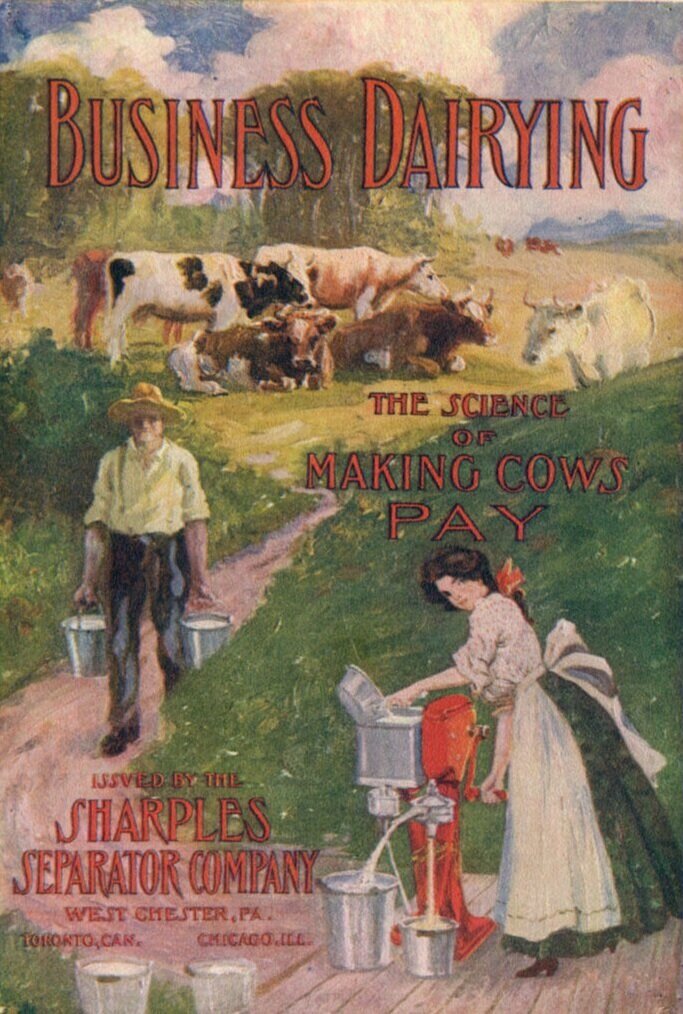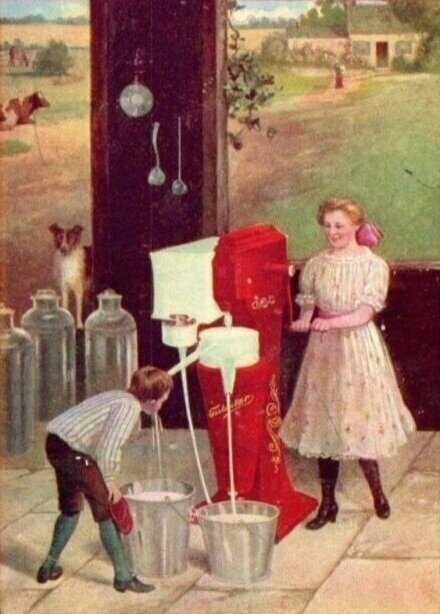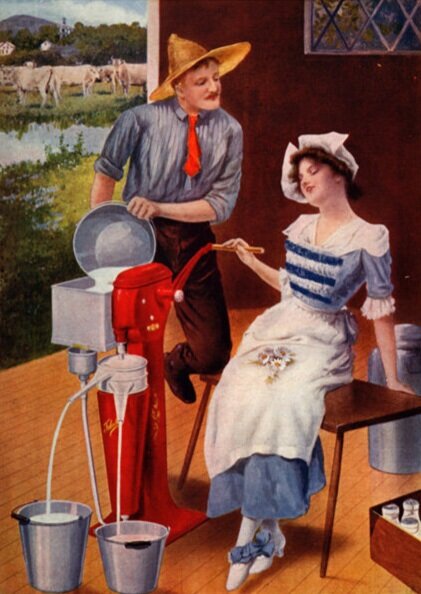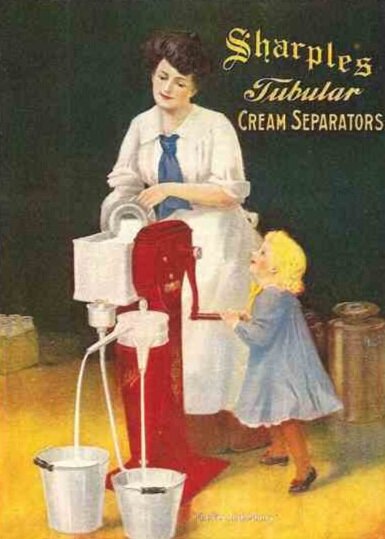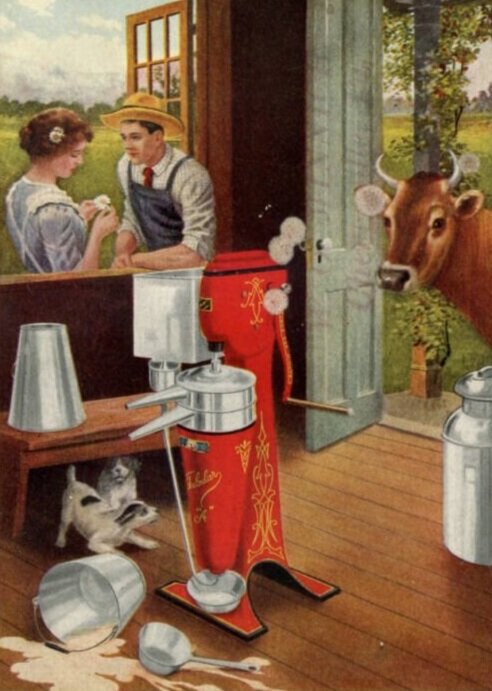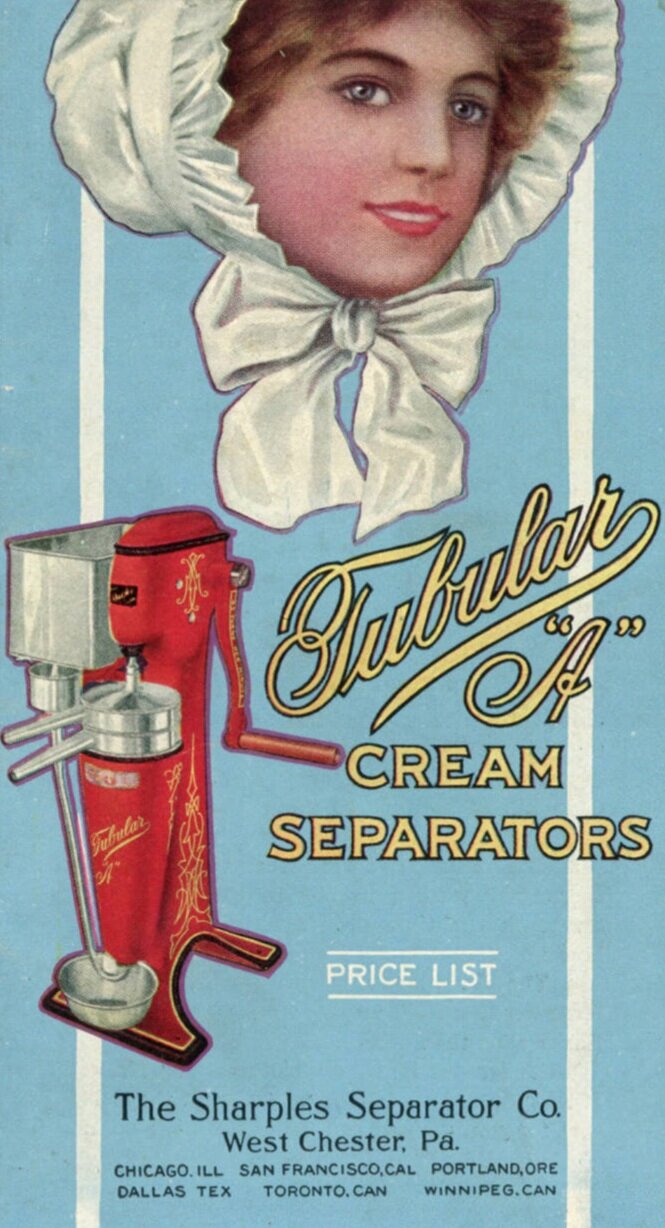
P.M. Sharples
(1857-1944)
In 1883, Philip M. Sharples obtained a franchise from the Swedish De Laval Cream Separator Company to make and sell their product, a machine that separated the milk fat from cows milk to make butter. An inventor at heart, he found several ways to improve the product, and began making and selling his own design, the Sharples Tubular Cream Separator, at his new factory in West Chester. His invention, the first American cream separator, sold worldwide and brought him great financial success.
GREYSTONE HALL
Between 1904 and 1910, P.M. Sharples purchased tracks of property varying in size from 2 to 216 acres of West Goshen farmland just outside of West Chester to create a large country estate.
In 1907, his grand English Renaissance style manor house, Greystone Hall, was completed at the center of the estate.
Greystone Hall stands today essentially as designed by Charles Barton Keen. The Foxcroft granite English Renaissance exterior of the mansion has not been added to or changed in any way. The architectural elements of all the interior rooms of the main part of the mansion have been remarkably preserved as designed and built. The only area that has been slightly reconfigured is the service wing and servants quarters in creating several apartments. Those room’s shapes and sizes remain the same despite being redesigned for different purposes. There are nine chimneys and sixteen fireplaces in the house. All the present furnishing and oriental rugs are from the Jerrehian family collections with the exception of the round oak Library extension table and the Billiard table in the Game Room.
Charles Barton Keen
ARCHITECT (1868-1931)
One of the most prolific and popular designers of the country house, Charles Barton Keen was born in Philadelphia in 1868. Keen designed residences in the Philadelphia area for over 35 years including homes in Germantown and the Main line’s Overbrook. He later designed the Aronomink Golf Clubhouse and “Rose Garland”, now known as “the Willows”. Like other Philadelphia country house architects his work focused on an integration of house and garden. Notable among the many buildings designed by Keen is "Reynolda" built for R. J. Reynolds in Winston-Salem (1913) which is now a museum of American Art. Eventually Keen’s work would extend from Maine to Florida. Amply published in monographs regarding country houses, especially in the 1920s, Keen represented the best of the colonial revival designers.
Pictured below is Reynolda in Winston Salem, North Carolina.
The Sharples Family
P.M. Sharples married Helen E. (Brinton) Sharples in 1884 and they had 4 children: Helen B., Emlen A., Philip T. and Laurence P. Sharples. Only four years after Greystone Hall was completed, his wife Helen died in 1911. The first family wedding held at Greystone Hall was the marriage of Sharples’s daughter Helen to Samuel Butler on October 8, 1914. Sharples later remarried Jean W. (Davy) Sharples, with whom he had 3 children: Thomas D., Mary C. and Jean M. Sharples.
(These photographs of the Library and Great Hall were given by P.M.’s daughter Helen to her fiancé Samuel Butler in 1913.)
The Great Depression
The Sharples family lived at Greystone Hall until 1935. Sharples’s early great success was paralleled by financial ruin. Greystone, which had been pledged as collateral on loans, was foreclosed in the Depression and Sharples and his young family with wife Jean moved to Pasadena, California where he lived until his death in 1944. During the late Depression years and the first years of World War II, about half of Greystone’s acreage was sold in small parcels. Greystone Hall, as with many of the great mansions of yesteryear, was considered “a white elephant.”
To the right are the front and back covers of the pamphlet promoting the Corn Exchange National Bank’s sale of the property, naming Greystone Hall “The Garden Spot of the Philadelphia Suburbs”.
The Jerrehian Bros.
The Jerrehian family emigrated from Armenia to America on July 6, 1904 arriving at the port of Philadelphia. Aram Krikor Jerrehian, although only 15, became the de facto head of his family in America as he was the one who spoke English. Aram spent two years at Philadelphia’s Central High School to further improve his English while working part time for another relative, M.S. Gooloyan, who had an oriental rug business and showroom downtown. In 1906, Aram, with his father and uncles started “JERREHIAN BROS”- their own Oriental Rug Renovating Company.
Aram Krikor Jerrehian (left), Jerrehian Bros. Seal (middle), Jerrehian Bros. Truck (right)
The Jerrehian Family
In 1942, the Jerrehian Partnership bought Greystone from the Corn Exchange National Bank. The rug partnership had previously acquired other investment properties in Philadelphia but nothing on the scale of the purchase of Greystone. At the time of the purchase there were four partners: Aram, his brothers John and Joseph, and his sister Azniv.
Since 1942 several generations of the extended family have periodically resided at Greystone Hall and other buildings on the property. John’s family lived in the mansion in the 1940s and later at the Guest House. In the early 1950s Greystone Hall became the weekend and summer home of Aram’s family. After Aram’s death in 1965, Adrienne, his widow, moved to Greystone fulltime and dedicated her funds to maintain and preserve the property for the rest of her lifetime. In doing so she was greatly responsible for keeping the estate intact. Her son, Aram Jerrehian Jr., managed the partnership’s businesses for the next four plus decades. The company’s Walnut St complex was taken by eminent domain for the expansion of the University of Pennsylvania. The company closed down its satellite rug locations in the late 1990s. The partnership’s business since then has been mainly in investment in commercial and residential real estate.
Today Greystone Hall’s stately rooms display some of the largest and most exquisite rugs remaining in the family’s possession.
The family celebration of the baptism of Alessia Petrucione (1976-2013) and one of many intricate rugs in the Jerrehian Bros. collection.
Adrienne and Aram Jerrehian, Sr.
Jerrehian Family Weddings
Since 1960, the Jerrehian family has hosted family wedding ceremonies and receptions. Velda Jerrehian Moog was the first to have her reception at Greystone in 1960. Thirty years later, Velda would open Greystone Hall as a family business for weddings.


